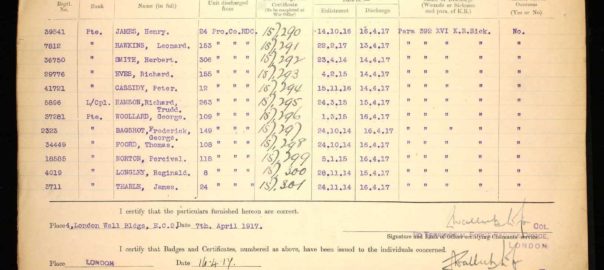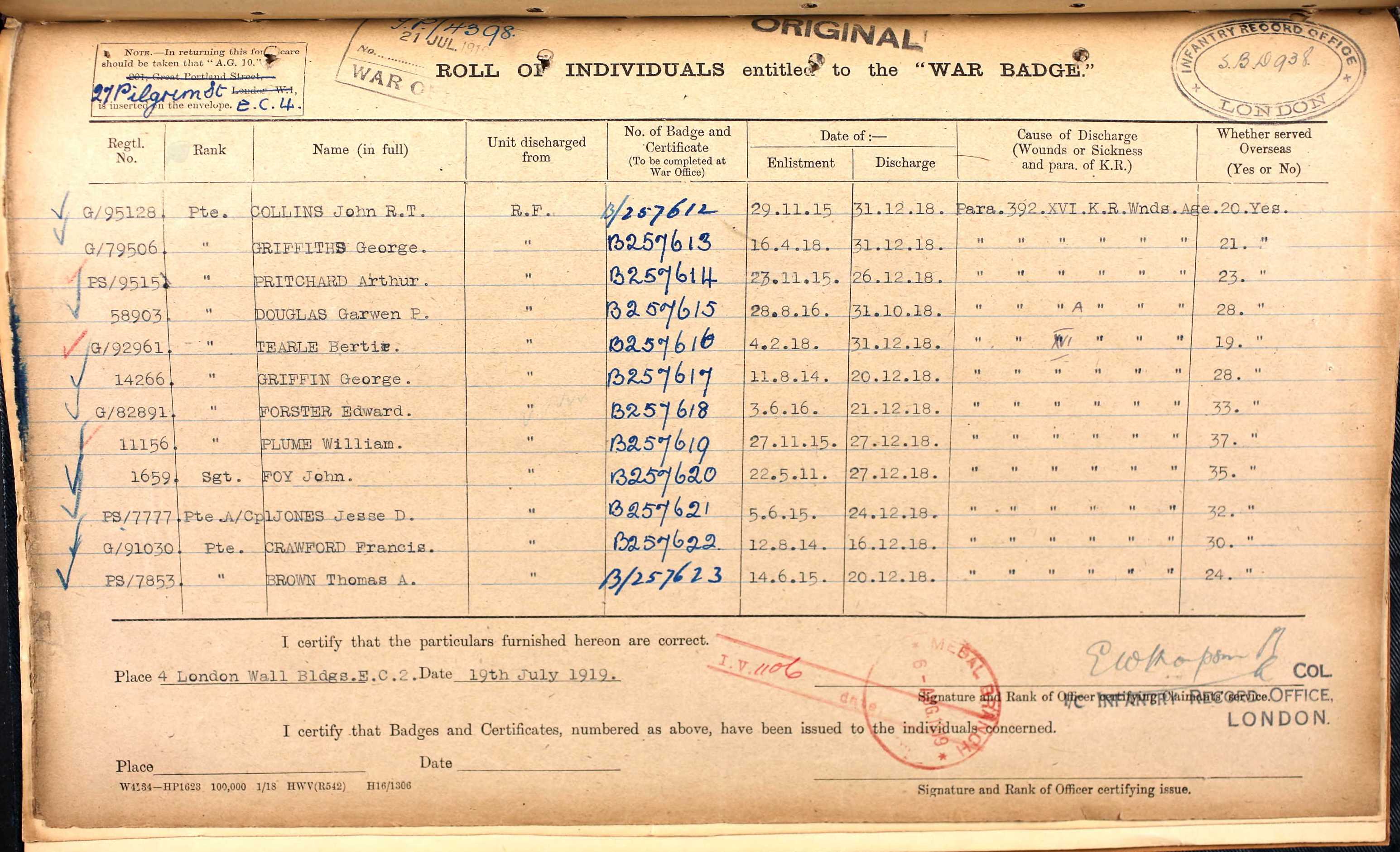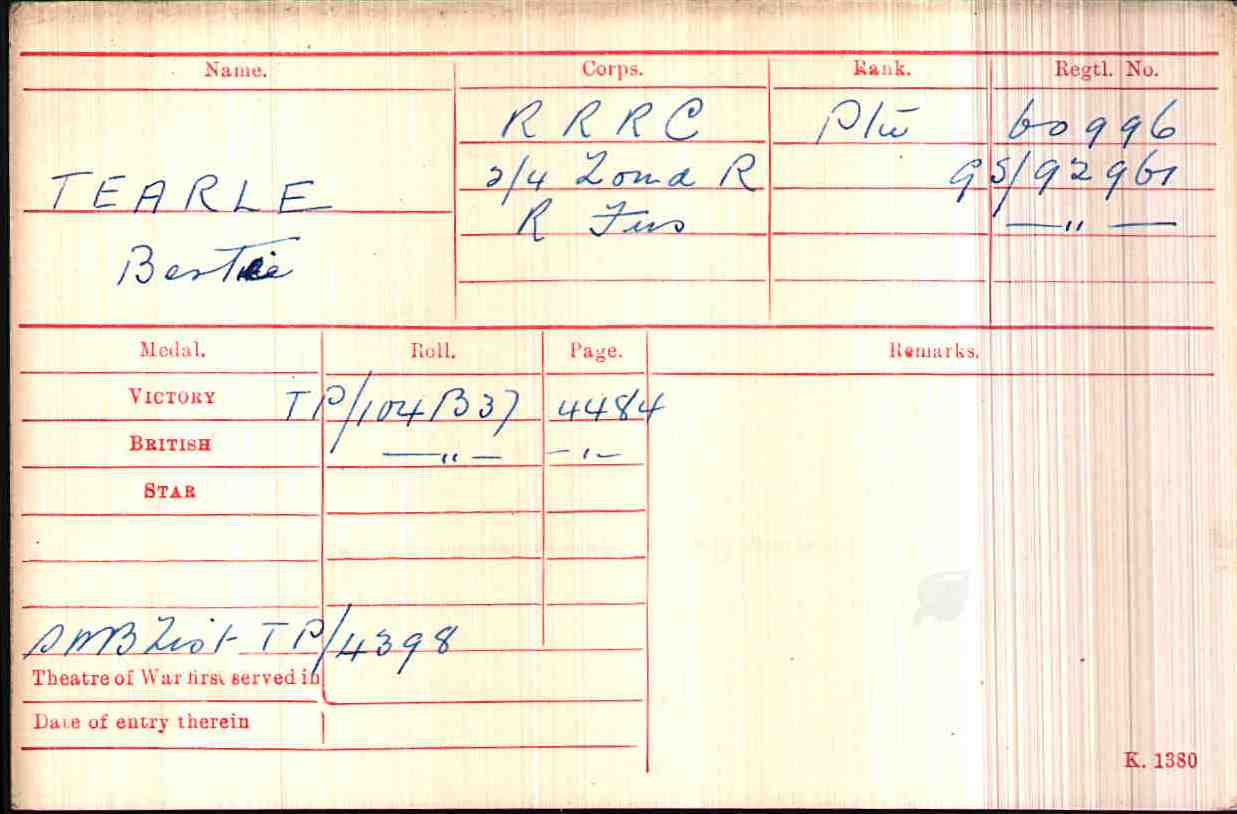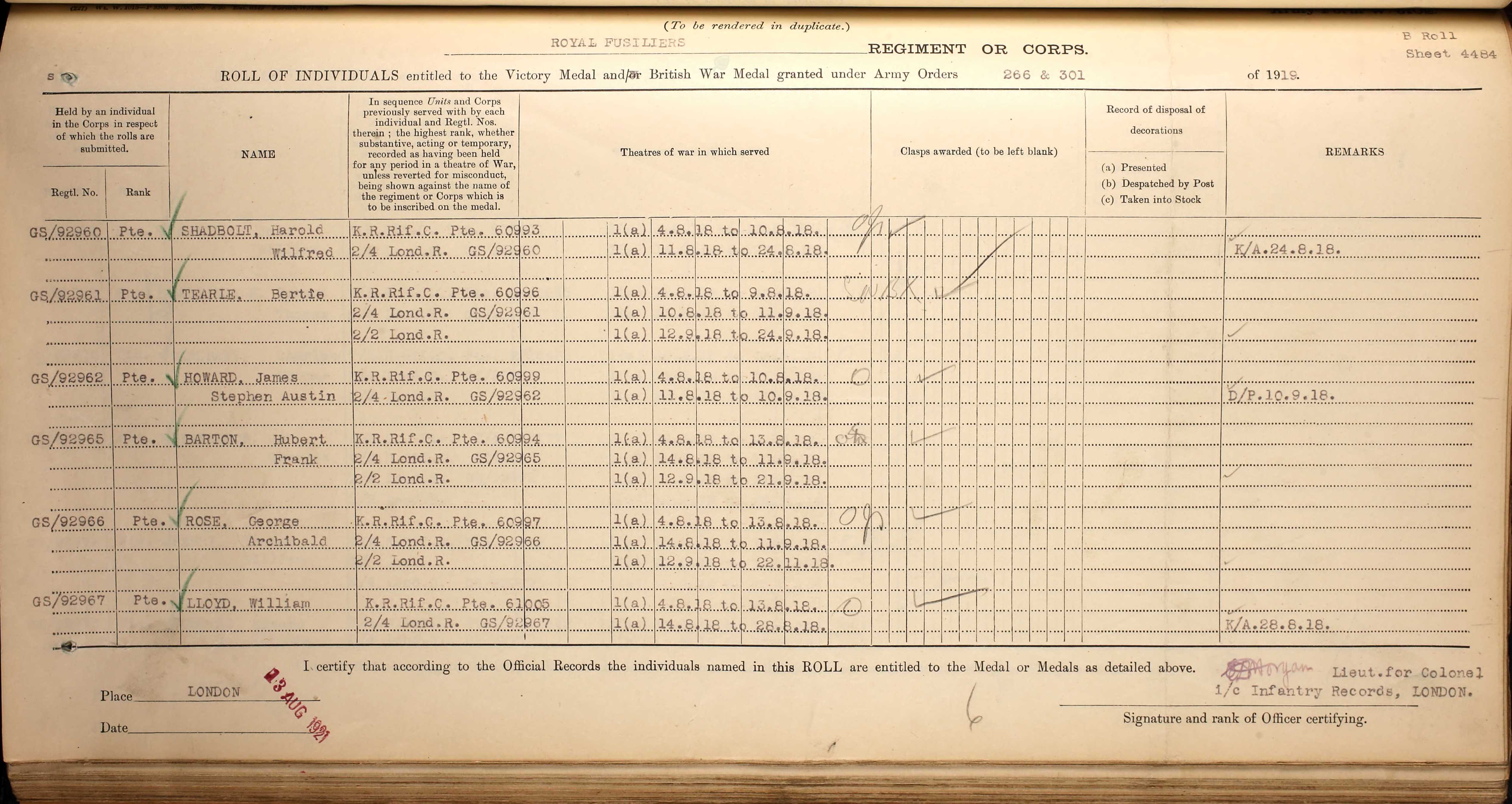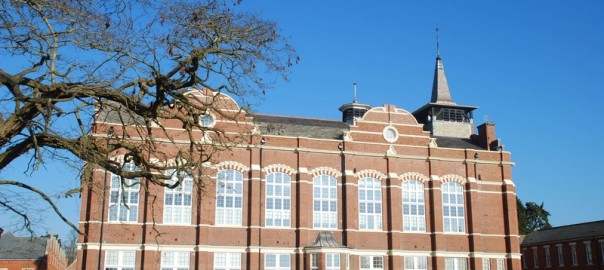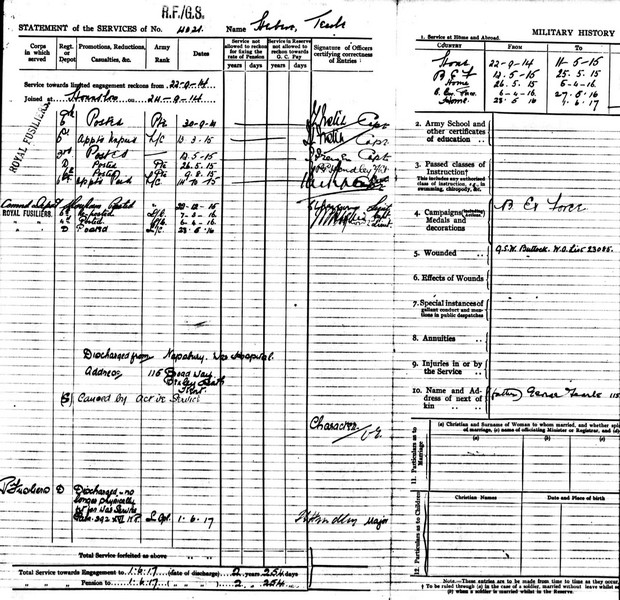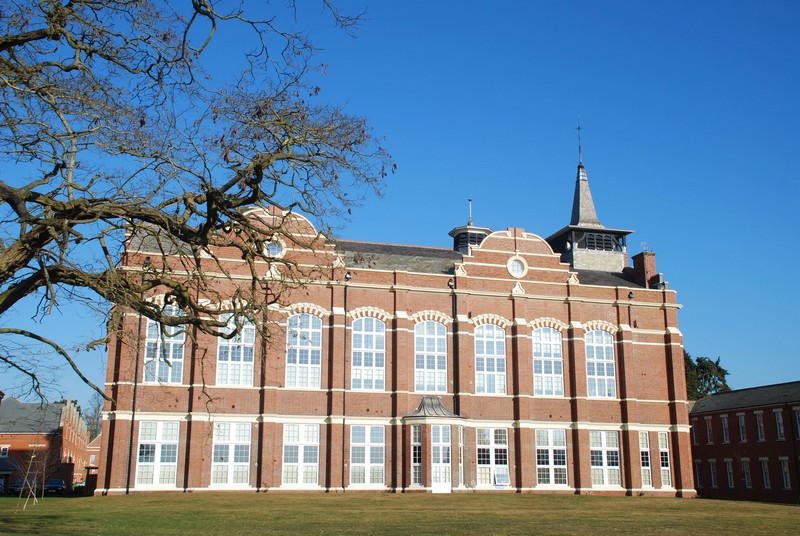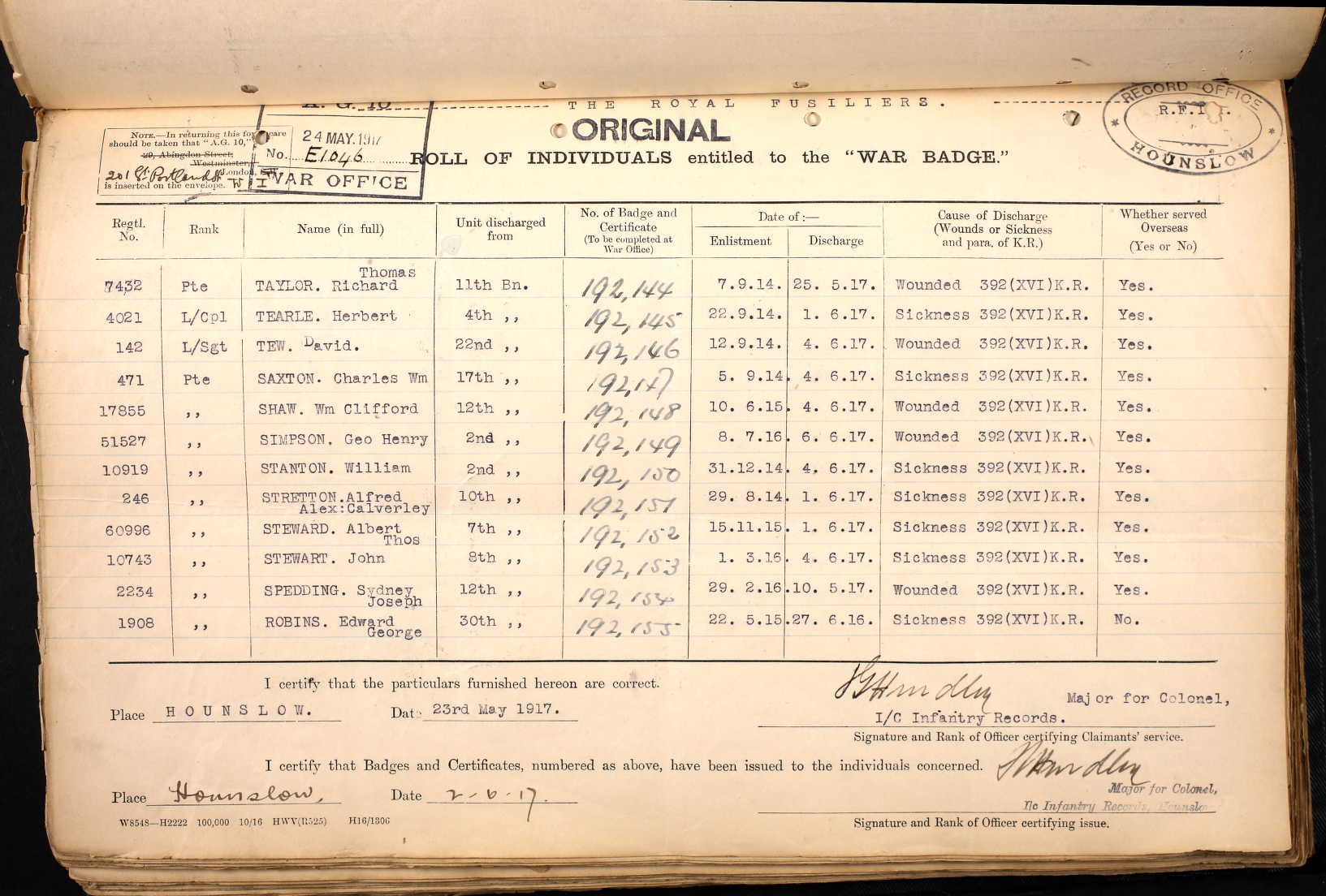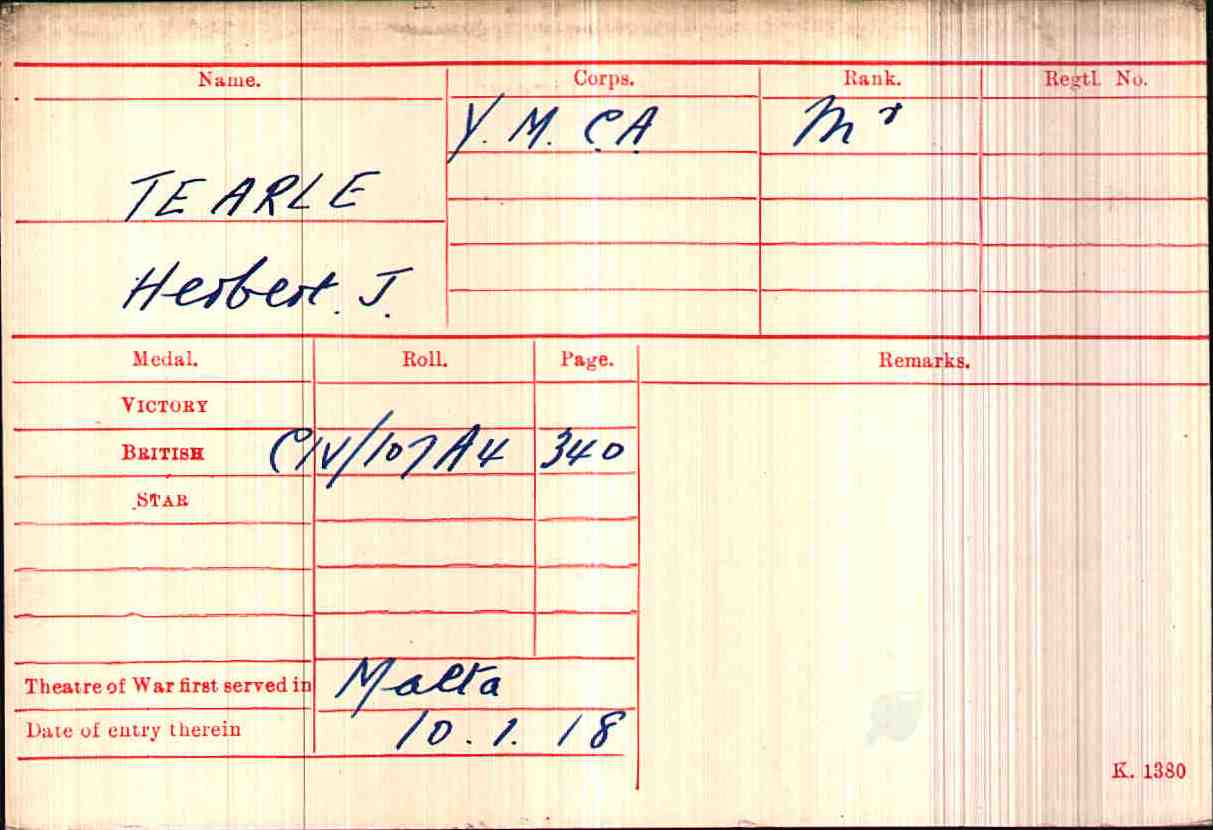I know frustratingly little about Bertie, but this is what I do know: he was awarded the Silver War Badge. Here is the documentation, from which we can deduce a few things:
Firstly, you can see that he joined the war late, but then he would, because he was only 14 when the war started. The Cause of Discharge column indicating a Paragraph 392 reason simply means that he was so wounded, he was not fit enough to be a soldier. He joined the war on 4 Feb 1918 and he is wounded beyond repair by 31 Dec 1918. He was just 19yrs.
No records from Chelsea Hospital survive for Bertie, so we cannot know the state of his injuries, nor even when he received them, but he has been in two different regiments; the King’s Royal Rifle Corps, and the Royal Fusiliers (City of London) 4th battalion and 2nd battalion. This is also the regiment that Arthur Walter Tearle joined, as well as Herbert John Tearle.
The war ended on 11 November 1918 and the 2/2 London Division was in Palestine for much of 1918, so we can assume Bertie was injured, or caught some awful desert disease, in Palestine.
We can now turn to two more sources of documentation, both reserved for Bertie’s service medals.
There is firstly a list of the fighting units he belonged to, and it’s worth remembering that the GS/ notation refers to a General Service soldier, and that in turn simply means Territorial and that means volunteer. He is awarded the Victory medal and the British War Medal.
You can see that the medal card refers to this document; in the top right-hand corner is the number 4484, which is the “Page” number on the medals card. It is the Royal Fusiliers which sets out the medals to be awarded, and this was the last regiment to which young Bertie belonged.
The only other documentation I have (except for turn-of-the-century censuses) is Bertie’s entry in the National Probate Calendar of 1961.
He still lives in St Albans, he has married, but he has no children, and he owns very little. The “effects” of £592 shown here is probably the value of his house. We do not know if he worked anywhere, and we do not know if he even walked. He has lived to 61yrs old, but that is not a great age; his sacrifice in going to war has been ongoing for the rest of his life.
Now, who was Bertie? His parents were Edward Joseph Tearle 1869 and Emma Elizabeth nee Warner. Edward grew up in the Symonside Cottages, just off Coopers Green Lane, between St Albans and Stanborough. His parents were John Tearle 1830 of Soulbury and Harriett nee Figg. Both of these parents spent time in the Hertford Workhouse, incarcerated because of debt and grinding poverty. John’s parents were Richard Tearle 1805 of Stanbridge and Martha nee Walker, the founders of the Soulbury Tearles. Richard was a grandson of John 1741 and Martha nee Archer.
Edward was a younger brother of William Francis Tearle 1857 and the uncle to John Henry Tearle who was killed in 1915, so Bertie was a cousin of John Henry’s, and was himself the uncle to Edward Kefford William Tearle, who was killed at De Panne in WW2.
If anyone thought that moving from Soulbury to Hertfordshire would give them a better life, I do not think it really panned out that way.
